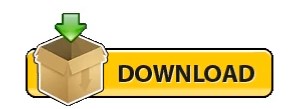

I'll review steps you need to take to keep yourself, your company, and your job safe. Phishing is on the rise, and you need to be aware.įive Steps to Better Security Working from Home - Security threats for people working from home are increasing. Legitimate-looking emails asking for sensitive information are often bogus.


I Think I’ve Been “Phished”, What Should I Do? - Phishing is epidemic. I'll look at availability, copyright, and more. Is Copyright Still an Issue If Something’s Not Available Anywhere? - Copyright is a complex topic, but the practical implications are simple. The catch is that you have to know it’s a possibility, and you have to know how to do it. While it doesn’t solve every problem, assigning a drive letter to an attached drive that for some reason doesn’t have one is a pretty simple operation. Then I was able to run my backup normally 2. The drive was then listed with the newly assigned drive letter – “D:”. Since “D” was already selected, I simply hit OK. The resulting dialog, which would normally show all the drive letters 1 that could be used to access the drive, was empty. I right-clicked on the drive, and clicked on Change Drive Letter and Paths…. I have no real idea why one wasn’t assigned automatically, but seeing the drive appear normally in Disk Management meant this would be a simple fix. Sure enough, my external drive was listed (as Disk 1 below), but without a drive letter. In all versions, you can run “diskmgmt.msc” as well. In other versions of Windows, you can right-click on “My Computer” or “This PC”, click on Manage, and then click on the Disk Management entry on the left. In Windows 10, I right-clicked on the Start button and clicked on Disk Management. The go-to place for disappearing disk issues is Window’s own Disk Manager.

In fact, nothing happened at all, except for the “USB device attached” connection sound.Īnd my backup program had nowhere to back up to. More often than not, I close that dialog box and get on with whatever I was doing, simply noting the drive letter that has been assigned.īut in this case, no letter had been assigned. It may also ask what you want to do with the drive.ĭepending on the drive’s contents and purpose, you may choose one of the listed options. Normally, when you attach an external drive to a Windows-based computer, the operating system makes the “USB device attached” sound, recognizes the drive, occasionally installs or configures some drivers, and automatically assigns the disk a drive letter. Now, to be clear, I don’t have an answer as to why things don’t appear.īut I can tell you what seems to work to make it show up. If anything, it seems to be getting a little worse in recent months. Since then, I’ve heard similar reports from others. Some time ago, when attempting to back up a new Windows 10 laptop, I inserted one of my external USB drives and … nothing.


 0 kommentar(er)
0 kommentar(er)
